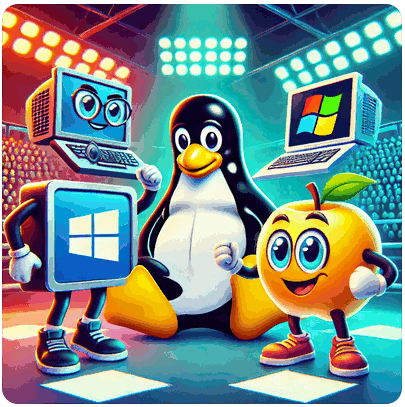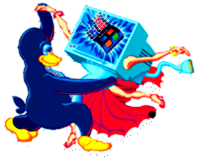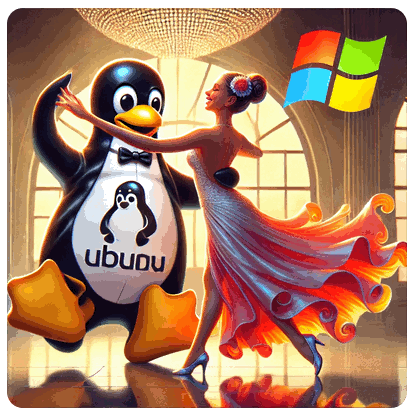The Great Code War: The Story of Linux, Windows, and macOS.
Three mighty kings ruled in the vast digital empire of the Open Source World: the wise and flexible Linux, the unwavering and resourceful Windows, and the slick and creative Macintosh. Their rivalry was legendary; each was vying to outdo the others and claim the crown as the top operating system.
Linux, the oldest of the three, was distinguished by its open-source nature and its ability to be shaped and molded by its enthusiastic followers. Developers and technology aficionados who loved its versatility and strength made it great. The community-driven nature of Linux, where many developers from all over the world collaborated to enhance and expand its features, was its strength. It was a kingdom where freedom reigned, and creativity flourished.
Windows, the middle sibling, was the best known and most widely used in the kingdom. Its compatibility with a wide range of hardware and software as well as its user-friendliness made it famous. Businesses and people both turned to Windows, which gave unmatched stability and support. Efficiency and dependability counted most in this kingdom of productivity.
The youngest of the three, Macintosh was elegance and style in person. Artists, designers, and creative professionals especially loved its elegant, intuitive interface and smooth integration with other Apple products. In Macintosh's kingdom of creativity and elegance, form and function merged flawlessly to offer an unmatched user experience.
The competition between the three titans was intense; each seeking to prove their supremacy. Battles were fought in the hearts and minds of consumers, with each kingdom presenting distinct assets and advantages that appealed to various requirements and tastes.
Linux developers adored the operating system's customizability and security, claiming that their domain was the most flexible and secure. They pointed to the many distributions that enabled consumers to personalize their experience to their exact specifications.
Windows' loyalists argued that their kingdom was the most open and flexible, highlighting compatibility and simplicity of use. They underlined the large software library and the smooth integration with many different types of equipment.
Macintosh's fans lauded its sophistication and performance, saying their kingdom presented the most polished and enjoyable user experience. They stressed the sophisticated style, natural interface, and the powerful software available only in their field.
 The Great Code War exposed that each kingdom had its own positive and negative qualities. The wise came to understand that the real power resided not in vanquishing the oppositions but in acknowledging the value of every contribution to the digital world.
The Great Code War exposed that each kingdom had its own positive and negative qualities. The wise came to understand that the real power resided not in vanquishing the oppositions but in acknowledging the value of every contribution to the digital world.
Ultimately, a fragile peace was reached, the three giants aware that their competition had forced them to innovate and improve. Each one served their own set of devoted followers while also honoring the work of the others; they came to coexist.
And so the kingdoms of Macintosh, Windows, and Linux kept growing, each one essential in the constantly changing fabric of the Open Source World. Their competition, once a cause of conflict, had grown to honor the diversity and richness of the digital landscape and drive advancements.
